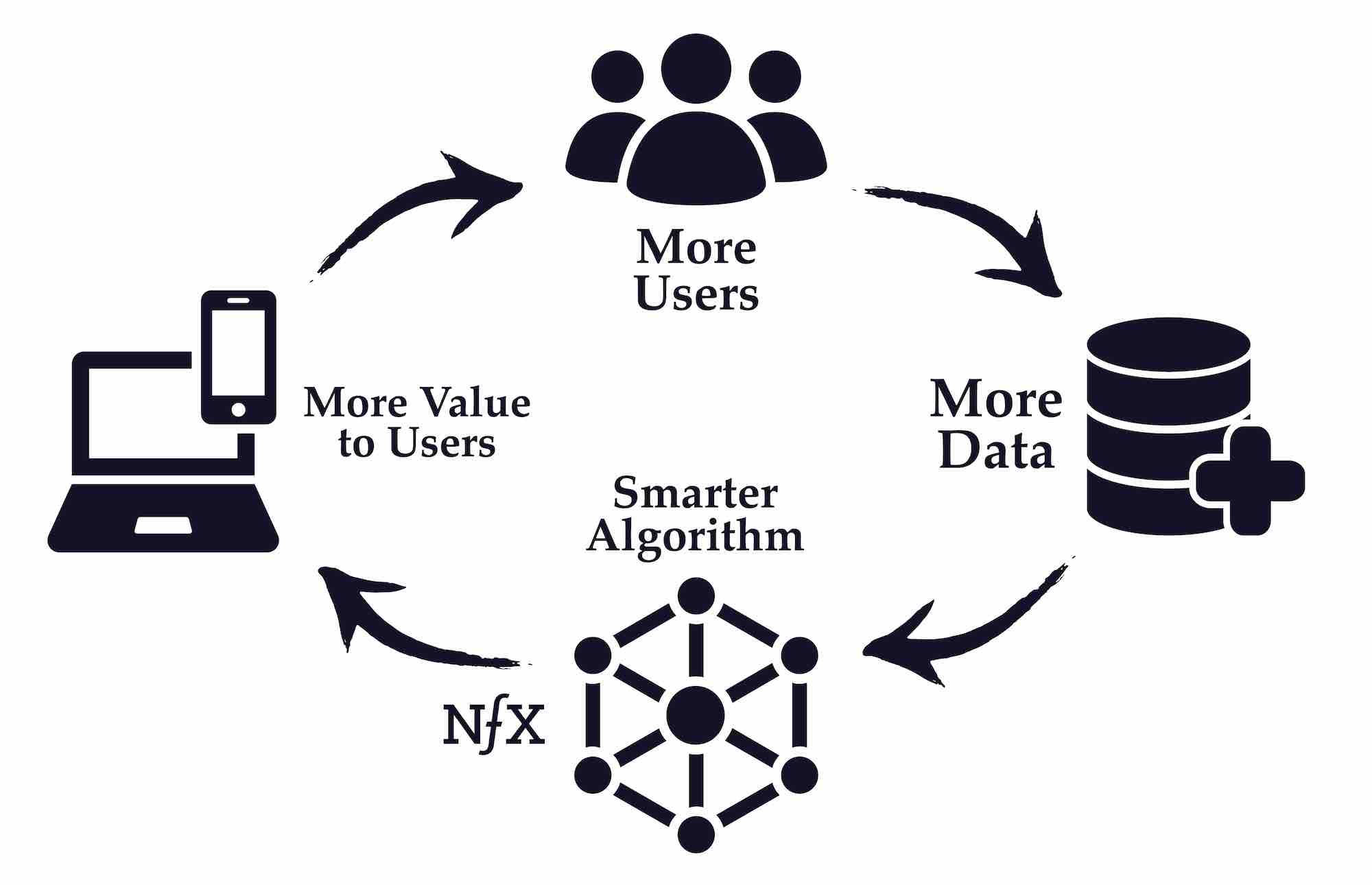What is a Network Effect?
The effect of a network is the effect of the number of users of a product on its value. The general concept of networking is that the more users a product or network has, the greater its value, and vice versa.
Examples of network effects and their positive and negative effects in today’s world are so many that at a glance, several examples can be found. Perhaps a good example of this is the Orkut social network.
Orkut was a social network like Facebook and Instagram, launched in 2004 before Facebook and Twitter; But he could not achieve the necessary success and was forgotten. Of course, other factors certainly played a role; But its small number of users was one of the factors that affected its value as a network.
The networking effect on digital currencies is also very important. The ultimate goal of digital currencies and blockchains is to organize and integrate into human society. For these currencies to achieve their goal, they need widespread acceptance and high users. Increasing the number of users also has positive effects for themselves.
The more people use these networks, the more services will be available to them.
This is exactly the mechanism of a network-related effect.
What determines which digital currency projects are leading the way in a particular sector? We might assume that the market automatically tends to better projects in the long run, But this is not easy and there are many factors involved.
Developers may create products that are technologically very innovative and creative, But the same products will not be considered if they do not have a good market at the time of supply.
In some cases, technically inferior projects account for a large share of the market; Simply because they are available at the right time. This is where networking comes in handy.
What is the effect of networking?
Networking is an economic concept that states that the value of a product, project, or network will increase as its users increase. Once this phenomenon has taken shape, each new user adds value to that product as they enter the network. This, in turn, motivates newer users to join the network, and the cycle continues.
A prime example of a network effect is the telephone. Technology like the telephone is only valuable if many people use it. Imagine having only one phone in the world. It is certain that in such a case, the telephone network will not be useful and the network that is not useful will have no value.
For this network to be valuable, it has to be used by many people, and the more users it has, the more its value increases exponentially.
 Technology like the phone needs more users to increase value
Technology like the phone needs more users to increase value
In the early days of the invention of the telephone, the value of this innovation was very low. In the not-so-distant past, only a few people had telephones in their homes. Also, In addition, their homes had to be physically connected to allow them to use the telephone.
But with the advent of this technology, more and more people were able to buy phones, and this increased the value of the entire network. As the number of users increased, so did the value and use of the network, creating a positive feedback loop; As more and more people joined it every day, its value grew exponentially.
Types of network effects
There are two main types of network effects: direct and indirect.
The effect of direct networks is what we have just described; That is, a situation in which an increase in users increases the value of the network. The telephone example mentioned in the previous section is a good example of the effect of direct networks.
The effect of indirect networks is a bit more complex. This concept refers to the side effects and over-organization that come with the direct type. Many of the platforms we face today have different groups of users.
The effect of indirect networks is that increasing the number of users from one group increases the value of the platform for users in another group.
Consider an online transportation service like SNAP.
Increasing the number of passengers in this service not only increases the value of the entire network but also benefits drivers. The effect that increasing SNAP users have on drivers can be seen as an example of the effect of indirect networks.
Of course, in many cases, this is a two-way street. For example, increasing the number of drivers has the same positive effect on passengers and makes them more comfortable.

A project with a strong network effect requires skilled developers to investigate and fix its code bugs; Because there is a large amount of value involved (and the credibility of the network itself is constantly compromised).
Examples of network effects
Modern examples of network effects can be seen in a wide range of products. One obvious example of this is social media. Social media users often tend to join networks developed by well-known social media developers. This encourages people to turn to a limited number of platforms so that only a few services reach exclusive positions.
If start-ups want to launch a new social networking platform, they can hardly get the volume they need; Because the effect of networks of market-leading platforms will make them superior in this competition.
Another good example of a network effect is intelligent urban transportation systems. In the United States, for example, Uber and Lyft have become so dominant in this market that newer services are virtually unable to compete with them.
In Iran, such a situation can be seen in SNAP and Pepsi services.
The network of users of these two companies and their monopoly is so extensive that it does not leave much room for newer services.
The same is true of eBay and Amazon in the field of online sales, Google in the field of Internet search, AirBNB in the field of online rental, Microsoft in the field of corporate operating systems, and Apple in the field of phones.
With that said, the question may arise as to whether only for-profit companies with specific business models can achieve networking. No. Wikipedia is a good example of an open-source project that has created a dramatic networking effect.
The effect of networks and digital currencies
The networking effect of digital currencies and the Chinese blockchain is of great importance.
Sample BitcoinConsider. Along with all the desirable features of Bitcoin, this digital currency has a very powerful networking effect.

Bitcoin network miners support its security and there is a lot of liquidity to keep them running. Now imagine that another network has been launched that pursues the same goal as Bitcoin.
The miners of this network may receive even more rewards, But the network’s liquidity is not enough for them to turn in their rewards or leave the network at any time.
So they have two options: to take a risk and hope that the new network will improve liquidity in the future, or to continue bitcoin mining and have relative confidence that they will still be able to operate in the business.
This is how the network effect works.
Even if the new option is technologically superior or more rewarding, migrating from bitcoin to it does not necessarily make sense.
It should be noted, however, that this situation is not simply the result of the effects of bitcoin networks. Bitcoin has inherent and unique features that make creating a network with the same features essentially difficult. So look at this example more as an intellectual experiment.
The effect of networking in a decentralized financial environment (Defy) Is also very important. If a product, service, or even smart contract be able to achieve great success in this space and create a revolution, it will be difficult to compete with other products. Of course, Defai is still in the early stages of its path.
Many people believe that so far no product in this space has created a significant network effect that can make it a decisive winner in this market.
The effect of negative networks
It is interesting to know that there is another type of network effect and that is the negative network effect. The effect of negative networks is exactly the opposite of the above; That is, each new user destroys part of the value of the ecosystem instead of adding value.
For a better understanding, you can compare it to traffic. When the number of cars on a road exceeds its capacity, the addition of a new car will make its performance more difficult.
The same traffic can happen to networks. In such cases, we say that the network has become “congested” or “saturated”.
 the traffic; An example of a negative network effect
the traffic; An example of a negative network effect
This issue is very important in the design of china blocks. Blockchains should be designed in such a way that each new user adds value to their network.
In other words, blockchains should avoid the value of negative networks; Because this is the key to achieveScalabilityIt is in the china block.
If each new user increases the traffic and decreases its scalability and slows down the transactions, it means that the blockchain in question has a negative network effect.
for example, Gas Or network transaction fees AtriumThe tender is determined by a similar system. Each Atrium user offers a fee to the network’s miners. As users increase and usage increases, users increase their proposed fees to be able to prioritize their transactions and surpass others.
This increases the overall rate of fees in the Atrium network.
The problem, however, is that this trend cannot continue indefinitely. There comes a time when the fees of the Atrium network become so high that operating in this network is not economical.
In this situation, some users leave the Atrium network. This is an example of a negative network effect.
Of course, there are solutions to this problem in the Atrium network. EIP-1559, for example, is an Atrium upgrade proposal that revises the Atrium fee system.
In addition, a collection of updates to the second version of Atrium (Atrium 2.0) significantly increases the operational capacity of this network. These measures can help solve the problem of high transaction fees when increasing network activity.
Concluding remarks
There is a networking effect in various economic and industrial sectors, and digital currencies are no exception. The general concept of the network effect is that increasing the number of network users leads to an increase in their value.
Studying the mechanisms that create the network-related effect can be very useful for Chinese blockchain and non-Chinese blockchain developers. By applying these mechanisms in their designs, these people can help achieve the scalability and growth of their business as quickly as possible.
The number of customers and users is very important for any network and product. That’s why their developers, in the beginning, make every effort to attract a lot of people to their network.
Developers often want to spend a lot of initial money on advertising or even make their products available to the public for free; Only intending to be able to introduce their product and persuade more users to use it.
All of this is because these developers are aware of the benefits of networking.
They know that if they succeed and create a strong networking effect, all these efforts will be rewarded and they will reap many benefits.
If you succeed in creating a powerful networking effect for your product, then all you have to do is sit down and leave everything to the network users.













